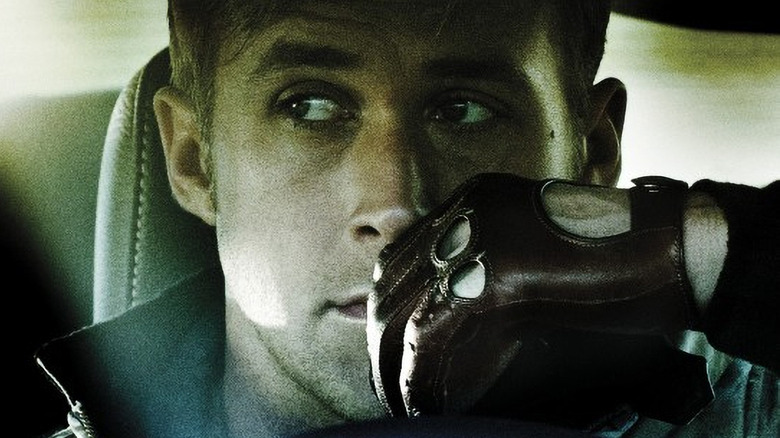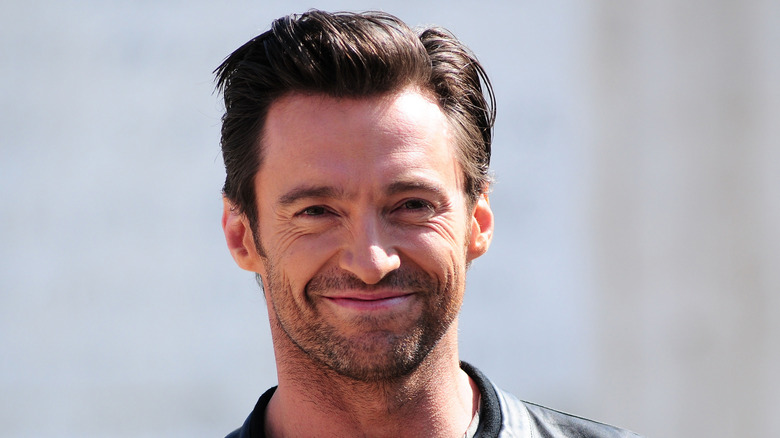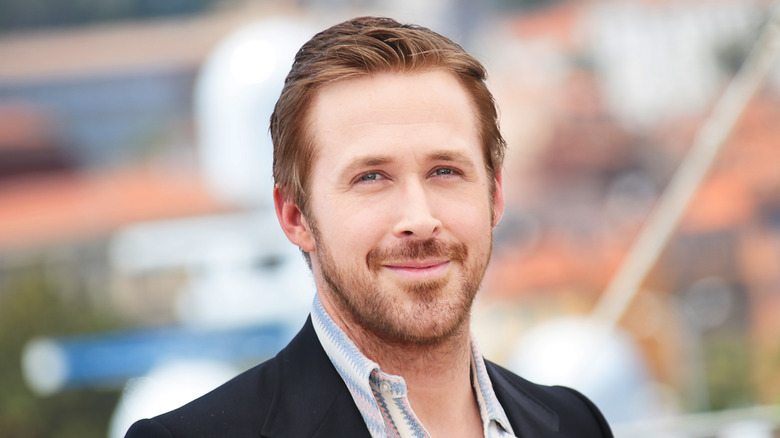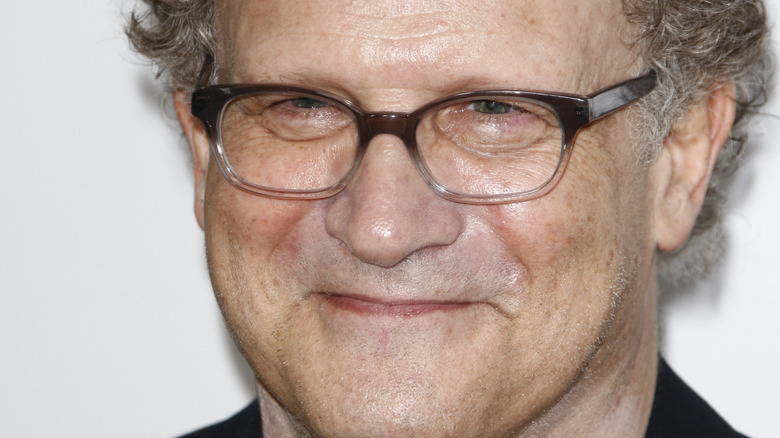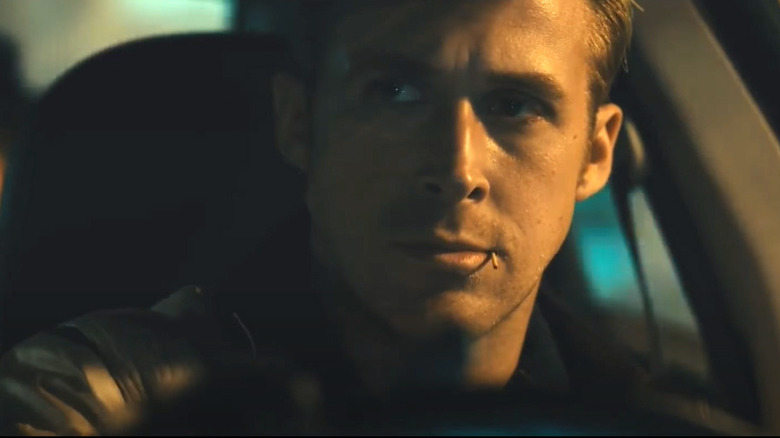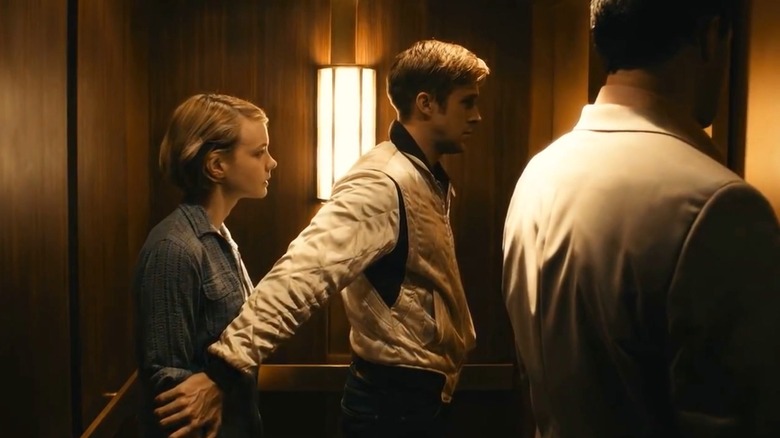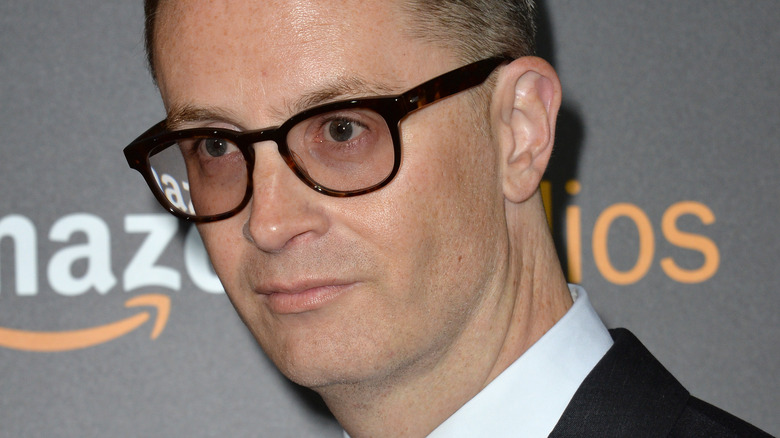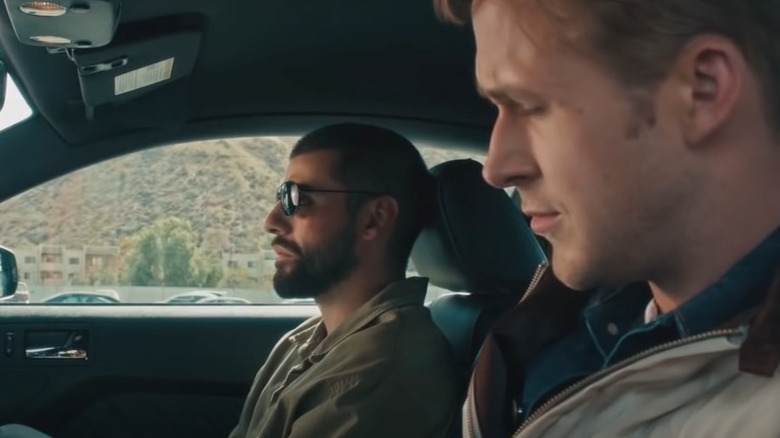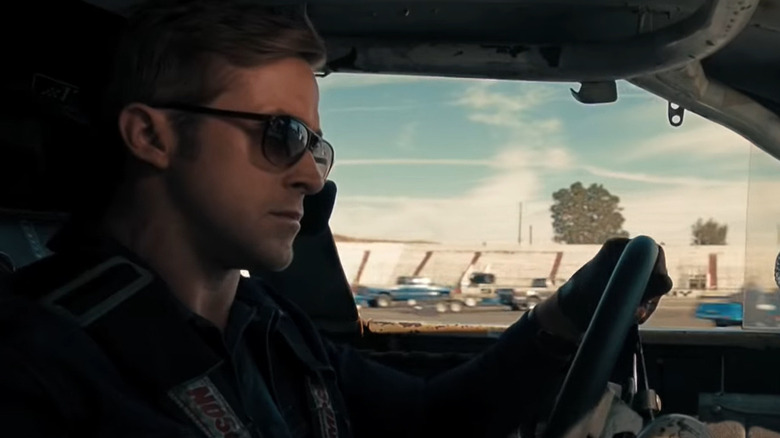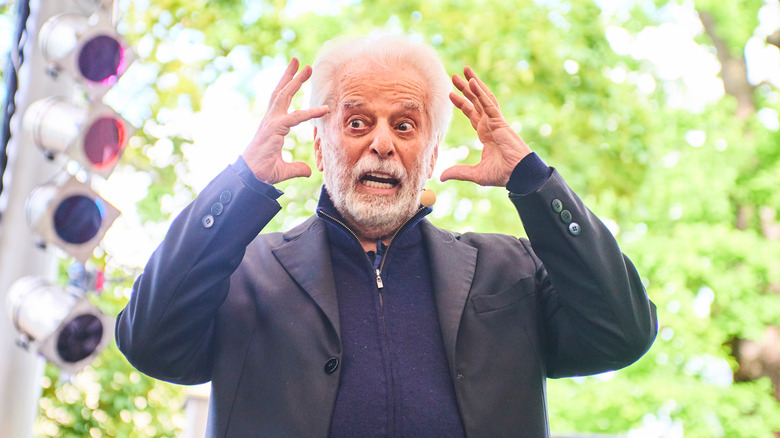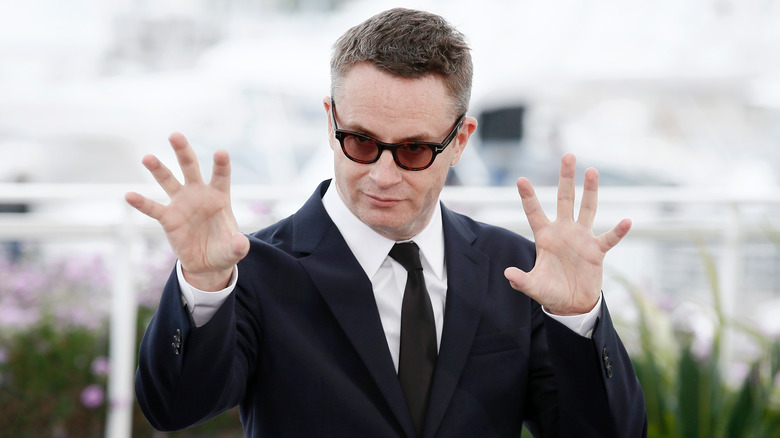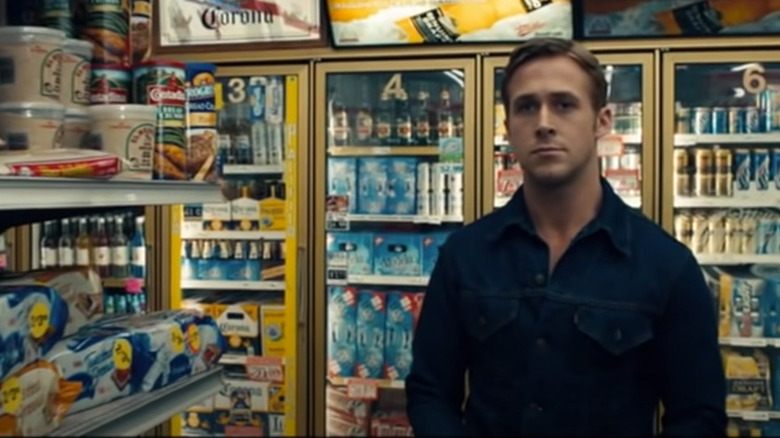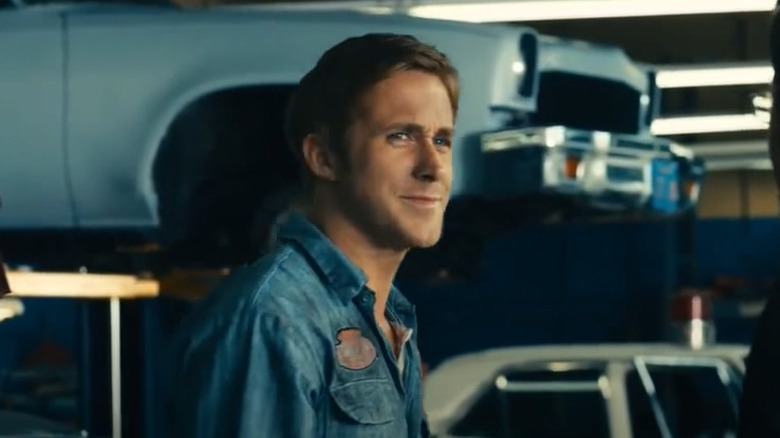The Untold Truth Of Drive
It can be hard to describe "Drive" to someone who hasn't seen it. This idiosyncratic 2011 movie can't be boxed into a single genre, let alone a one-sentence summary. But those who've watched it know that "Drive" is an exceedingly rewarding film that lives up to the hype. From Ryan Gosling's magnetic lead performance to spectacular supporting turns from Bryan Cranston and Albert Brooks to its dynamic camerawork, "Drive" has much to offer. This feature doesn't just captivate the viewer while it's playing — "Drive" lingers in one's imagination long after the credits have finished rolling.
As "Drive" is such a richly detailed film, it only makes sense that the story of making it is packed with fascinating elements. The path to casting was a complex one, as was the movie's journey through awards season. "Drive" also boasts surprising connections to fairy tales, the work of Alejandro Jodorowsky, and REO Speedwagon. This is the untold truth of "Drive," one of 2011's most unforgettable films.
Hugh Jackman was once set to star in Drive
It's hard to imagine anyone but Ryan Gosling inhabiting the lead role of the Driver in "Drive." Gosling's strong, understated work is a testament to how well he portrays internally complicated individuals. Despite how widely associated Gosling has become with this particular role, however, he wasn't always the first choice for it. Another A-list actor by the name of Hugh Jackman was once set to headline "Drive."
In February 2010, Empire reported that Gosling was taking over as the lead of "Drive." As Empire noted, Hugh Jackman was initially set to star in the production, with Neill Marshall ("The Descent") in the director's chair. That incarnation of the production never went forward. In 2013, Jackman revealed to The Hollywood Reporter that the reason he never got behind the wheel of "Drive" was that he was uncertain about the prospect of working with director Nicolas Winding Refn. What Jackman saw as a murky prospect, Gosling saw as a project rife with potential.
Ryan Gosling chose Drive's director
2004's "The Notebook" firmly established Ryan Gosling as a bonafide movie star. His viability as a major actor was reaffirmed by the making of "Drive," which offered Gosling a chance to test a whole new level of power. For the first time in his career, he was given control over who'd be directing a project he was starring in — and he was eager to use it.
"It was supposed to be a commercial movie about a Hollywood stuntman who robs banks at night and they told me I could have any director I wanted," Gosling revealed in 2010 (via IndieWire). "Provided he could do it ... And I thought 'It had to be Nicolas.'" Considering how important Refn's unique vision ended up being to making "Drive" work like it does, giving Gosling this level of control clearly paid off like gangbusters for the entire production.
How Albert Brooks got to play a mob boss
Thanks to his decades of experience in the film industry, any given person probably knows Albert Brooks from something. Perhaps you're familiar with his acclaimed directorial efforts, like "Defending Your Life," or maybe you know him as Marlin in "Finding Nemo." Despite his wide-ranging career, however, in the pre-"Drive" world, few likely thought of him as ideal casting for a mob boss. Yet "Drive" cast the acclaimed performer as gangster Bernie Rose, and as it turns out, Brooks relished the chance to embrace an unorthodox role.
"I always wanted to play a part that was unexpected, and I know I have the ability," Brooks told the Pittsburgh Post-Gazette, "but you got to convince a movie studio to take out the [Stellan] Skarsgard and put you in. It's hard to do." When Brooks pursued the role, Refn directly asked him why he should cast him as Rose. "Well, cast someone who you've seen before and you'll have an ordinary movie," Brooks responded. With that, Brooks solidified his place in the cast of "Drive," which resulted in one of the film's most acclaimed performances.
Why there isn't much CGI in Drive
In sharp contrast to many modern movies, "Drive" doesn't use much CGI in its most action-heavy scenes. Instead, practical methods are used to capture the movie's car chases and hand-to-hand fistfights, which lends a tactility to the proceedings that reinforces the kind of gruesomeness these characters are capable of dishing out. This is just one of many reasons director Nicolas Winding Refn went against the visual effects norms of modern filmmaking.
"I love to be on location, I love to be in other parts of the world, I love to be where I'm reminded about real, you know, emotions," Refn explained to Collider. He went on to argue that tangible environments inform actors' performances in a unique and valuable way. It's not all a matter of artistic idealism, of course — Refn admitted that the hefty price tag that accompanies CGI-heavy films has also played a part in his preference for practical effects. Whatever the reason Refn forgoes CGI, however, movies like "Drive" benefit mightily from the decision.
The importance of Drive's elevator scene
Anyone who's just watched "Drive" is bound to talk about its iconic elevator scene, which transitions from being a passionate expression of romance into a demonstration of extreme violence. It's grisly, evocative, and unforgettable. It also reflects the movie's structure as a whole — something that required a whole lot of careful planning, as Refn explained to Complex.
"Drive" is structured "very much like a Grimm's fairy tale," according to Refn. "Like a Grimm's fairy tale, it had to be extremely pure in the beginning, but then it had to be very dark and moralistic at the end. One part needed the other part to justify the circle." This approach informs the pacing of the elevator scene, and why it explores two very different tonal extremes. It's a microcosm of "Drive" itself, constrained within the cramped confines of an elevator. This ensures the viewer won't be able to turn away from the movie's explicit demonstration of its core self. Indeed, as Refn told Movieline, the elevator scene is "the heart" of "Drive."
Nicolas Winding Refn's unique approach to casting
Considering how idiosyncratic Nicolas Winding Refn's movies are, it should be no surprise that the auteur has a similarly unique approach to the process of casting. While some films orient their casting process around attracting big names or bending to fan expectations, Refn prefers to keep things eclectic. In an interview with Reuters, the director compared the casting process to intercourse: "Even when it's bad, it's still good." He also noted that casting Carey Mulligan came down to the insistence of his wife, who was enamored with Mulligan's performance in 2009's "An Education," which Refn hadn't seen at the time.
Perhaps the most peculiar experience Refn had while casting "Drive" came from his initial talk with Ryan Gosling. "There was this awkward silence between us," Refn recalled of their after-dinner drive in Gosling's car. "Ryan turns on the radio. It's soft rock — REO Speedwagon, 'I Can't Fight This Feeling.'" This tune caused Refn to break down crying: Suddenly, he knew that "Drive" was about "a man driving around in a car at night listening to music, that's his emotional release." Casting sessions usually don't contain such profound discoveries, but such are the revelations that arise from Refn's oddball approach.
A unique way of filming car chases
"Drive" doesn't have as many car chases as, say, your average "Fast and Furious" installment, but the ones that do occur are key parts of the overall plot. As such, these sequences needed to be thoughtfully captured, especially since "Drive" didn't have the endless budget of a blockbuster. This meant that the crew behind "Drive" had to come up with a creative way of portraying flashy car chases.
"We engineered this thing from the ground up; it's powered by a V8 Cadillac Northstar that's about 400 horsepower," Robert Nagle told Filmmaker Magazine about the camera rig, known as "Biscuit Jr.," used to capture the movie's car chases. "It's front wheel drive and there's a pair of wheels at the back. Six wheels in total." A pod capable of moving around the car allowed shooting from all angles, with no risk of capturing the equipment within the frame. With this unique rig in the works, "Drive" was able to crisply capture some of the movie's most important scenes.
Drive's victories at Cannes
The 2011 Cannes Film Festival was dominated by Terrence Malick's "The Tree of Life," which scooped up several high-profile awards and brought buzzy stars like Brad Pitt to the red carpet. But it wasn't the only film that caught people's attention at Cannes that year. This is also where "Drive" premiered, and began to develop the word of mouth that would ultimately carry it throughout its theatrical run.
As reported by the Chicago Tribune, "Drive" earned Refn the award for best director. He poignantly thanked his mom on stage, saying, "All my life she said I was a genius, whatever I did." That emotional vulnerability, juxtaposed with Refn's propulsive and grim motion picture, defines the distinct attitude that makes "Drive" such a memorable part of the film landscape. It may not have won the most awards at the Cannes Film Festival, but "Drive" had no trouble making its mark.
Alejandro Jodorowsky's influence on Drive
Alejandro Jodorowsky's body of work isn't just famous for pioneering a whole new form of surrealism, it's also gained notoriety for the artists it's influenced. According to The New York Times, for instance, John Lennon was intensely interested in Jodorowsky's "El Topo" back when it was first released. Nicolas Winding Refn also finds the auteur's work impactful. With regards to "Drive," Refn has referenced a smorgasbord of different movies that influenced the production, including everything from arthouse titles to the blockbuster work of John Hughes. Jodorowsky left an especially large footprint on the production, however.
In conversation with New City Film, Refn noted that "Drive" owes such a great debt to Jodorowsky, it's actually dedicated to him. The influence of the storied director's avant-garde filmmaking comes through in the use of heightened colors in "Drive," as well as its abrupt shifts into unrealistic behavior — people don't just get into brawls on elevators every day. Jodorowsky's legacy is also apparent in the film's brutal depictions of sexuality and violence. More tangentially, this connection is further found in Bernie Rose's involvement in the world of foreign cinema, a domain Jodorowsky has scored much acclaim within.
Refn views Drive as a fairy tale
Given that "Drive" is a decidedly adult movie, the last thing one would think to compare it to is a fairy tale. Then again, those old-school fairy tales can be brutal pieces of storytelling in their own right, and a whole lot weirder than their Disney adaptations might suggest. Perhaps, then, it only makes sense that Refn has repeatedly stated in interviews that he feels a straight line can be drawn between fairy tales and "Drive."
"I read Grimm fairy tales to my daughter a few years ago, and the idea with 'Drive' was similar," Refn told The Guardian. "You have the driver who's like a knight, the innocent maiden, the evil king, and the dragon. They're all archetypes." Gosling's protagonist especially embodies the sort of character who has been a staple of fairy tales for centuries, according to Refn. "He's the man we all aspire to be," he detailed. "But he wasn't meant to live in the real world." Indeed, as any fan could tell you, "Drive" thrives because it doesn't occupy a strictly "realistic" view of the real world, allowing classical characters to exist within its modern confines. You might not want to send your kids off to bed with a screening, though.
Drive's experience at the box office
"Drive" is an artsy action movie, but its marketing went all-in on trying to make it a mainstream feature. Opening in a sizeable 2,886 theaters, "Drive" grossed $11.3 million in its domestic opening weekend. This didn't quite make "Drive" into the sizeable breakout hit some thought its mixture of Ryan Gosling, fast cars, and worldwide acclaim might create. On the other hand, it still did quite well, considering Gosling doesn't regularly headline movies that crack $100+ million opening weekends, and Nicolas Winding Refn has never been a household name.
"Drive" held on well in North America, ultimately raking in $35 million. It fared even better internationally, earning $46.2 million. This brought "Drive" to a global total of $81.3 million — a plenty profitable sum, given the film's $15 million budget. It's also enough to make "Drive" the biggest movie in Refn's career by a considerable margin. Despite directing acclaimed titles like "The Neon Demon," this director's never had another movie crack $1.5 million domestically, let alone $35 million. "Drive" may not have been the biggest movie of 2011, but it fared just fine on its own terms.
Drive's awards season journey
A hard-boiled action noir like "Drive" isn't what one thinks of first when pondering the type of films that catch on like wildfire during awards season. But the acclaim for "Drive" was so overwhelming, the film took home a veritable slew of trophies. The Critic's Choice Awards gave "Drive" eight different nominations, including ones for Best Director and Best Picture. The film also proved popular at the Independent Spirit Awards, where it earned four nominations. The National Board of Review (per The Washington Post) even labeled "Drive" one of the 10 best movies of 2011.
But the movie's awards season escapades came to a halt when the Academy Award nominations were announced. "Drive" ended up only scoring one nomination for Best Achievement in Sound Editing, which it did not win. It was shut out everywhere else. Albert Brooks took to Twitter to comically comment on this snub: "I got ROBBED. I don't mean the Oscars, I mean literally. My pants and shoes have been stolen."
Even if the star of "Broadcast News" couldn't score an Oscar nod for his against-type performance, "Drive" still managed to secure a hefty amount of awards season attention. Moreover, the film's fans know how special it is, regardless of trophy count — and that's what really matters.
